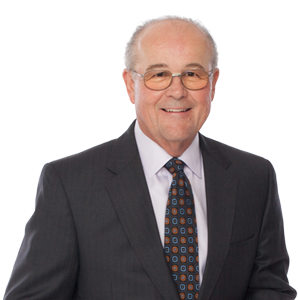Can a guarantor reduce its liability when it proves that a mortgage lender purchased the property securing the debt at a foreclosure sale for below market value? Prior to last year, this question was answered in North Carolina consistently, and overwhelmingly, in the negative. However, the North Carolina Supreme Court conclusively reversed this line of decisions in High Point Bank and Trust Company v. Highmark Properties, et al., No. 8PA14 (Sept. 25, 2015). This reversal must be considered in developing future workout, foreclosure and litigation strategies for guaranteed debt secured by real property.
Highmark required the Court to construe § 45-21.36 which provides that:
“When any [foreclosure] sale of real estate has been made by a mortgagee..., at which the mortgagee,... becomes the purchaser and... shall sue for and undertake to recover a deficiency judgment against the mortgagor, trustor or other maker of any such obligation whose property has been so purchased, it shall be competent and lawful for the defendant against whom such deficiency judgment is sought to allege and show as matter of defense and offset,... that the property sold was fairly worth the amount of the debt secured by it at the time and place of sale or that the amount bid was substantially less than its true value, and, upon such showing, to defeat or offset any deficiency judgment against him, either in whole or in part...” (Emphasis added).
Basically, § 45-21.36 is used in deficiency collection actions and provides a defendant with a means to minimize its liability based on the fair market value of the property. Assuming that the secured lender forecloses on real property under a power of sale and purchases the property at a foreclosure sale for less than the amount due on the underlying note, the foreclosure sale proceeds are applied to the obligation and the resulting deficiency amount remains due and owing.1 The lender may then commence a collection action to recover judgment for the deficiency. In these instances, § 45-21.36 allows the defendant that falls within the statute to show that the lender’s bid was substantially less than the property’s true value and offset the difference between the bid amount and the fair market value from the amount of any deficiency judgment. In essence, the statute can be used to show that lender received value from the foreclosure sale in an amount greater than its bid amount such that awarding a judgment for the full deficiency amount would unjustly enrich the lender and result in double recovery.
As noted above, by its terms, § 45-21.36 is only available to a “mortgagor, trustor or other maker of any such obligation whose property has been so purchased.” Decades of North Carolina Court of Appeals cases have limited this term to mean only persons who possessed an interest in real property. Because, in sophisticated transactions, title to the real property is often held by an entity borrower with the individual owners of the entity serving to guaranty the entity’s debt, this line of Court of Appeals cases effectively barred most guarantors from asserting § 45-21.36 as a defense.
The North Carolina Supreme Court in Highmark, following precedents from the 1930s depression era which interpreted a prior statute, reversed the existing line of Court of Appeals cases and conclusively held that § 45-21.36 is available to guarantors regardless of whether they own title to the underlying real property. In doing so, the Court reasoned that § 45-21.36 merely provides an equitable means to calculate the underlying indebtedness. Because a guarantor promises to repay the outstanding indebtedness, the Court reasoned that the guarantor should be able to invoke § 45-21.36 to determine the real amount of the indebtedness. In addition, in reliance upon its casting of § 45-21.36 as a means to calculate indebtedness, the Highmark Court also held that a guarantor’s waiver of its rights pursuant to § 45-21.36 would violate public policy and is unenforceable as a matter of law.
The effect of the Highmark case likely will be magnified by the Court of Appeals’ recent decision in United Community Bank v. Wolf, 775 S.E.2d 677 (2015), which allows a property owner to testify as to the property’s value without much regard to his or her qualifications. Applying Wolfe and Highmark, it is likely that a guarantor could defeat summary judgment in most post-foreclosure collection actions simply by raising § 45-21.36 and testifying that the property was worth some amount substantially more than the lender’s winning foreclosure sale bid. Practically, together, these cases could turn what were once relatively simple actions to collect on guaranties into battles between appraisers and property owners in an effort to determine whether a lender’s winning foreclosure bid approximated the property’s true value. As a result, Highmark represents a significant change in guarantor liability under North Carolina law of which both lenders, borrowers and guarantors should be keenly aware. These decisions may reverse the normal collection process and cause lenders to obtain judgments on the debt first and then foreclose to avoid these costly battles.
Contact Information
If you have any questions please contact our team below.
Womble Carlyle client alerts are intended to provide general information about significant legal developments and should not be construed as legal advice regarding any specific facts and circumstances, nor should they be construed as advertisements for legal services.
IRS CIRCULAR 230 NOTICE: To ensure compliance with requirements imposed by the IRS, we inform you that any US tax advice contained in this communication (or in any attachment) is not intended or written to be used, and cannot be used, for the purpose of (i) avoiding penalties under the Internal Revenue Code or (ii) promoting, marketing or recommending to another party any transaction or matter addressed in this communication (or in any attachment).
1 This is true even if the secured lender subsequently sells the property for more than its foreclosure bid.




